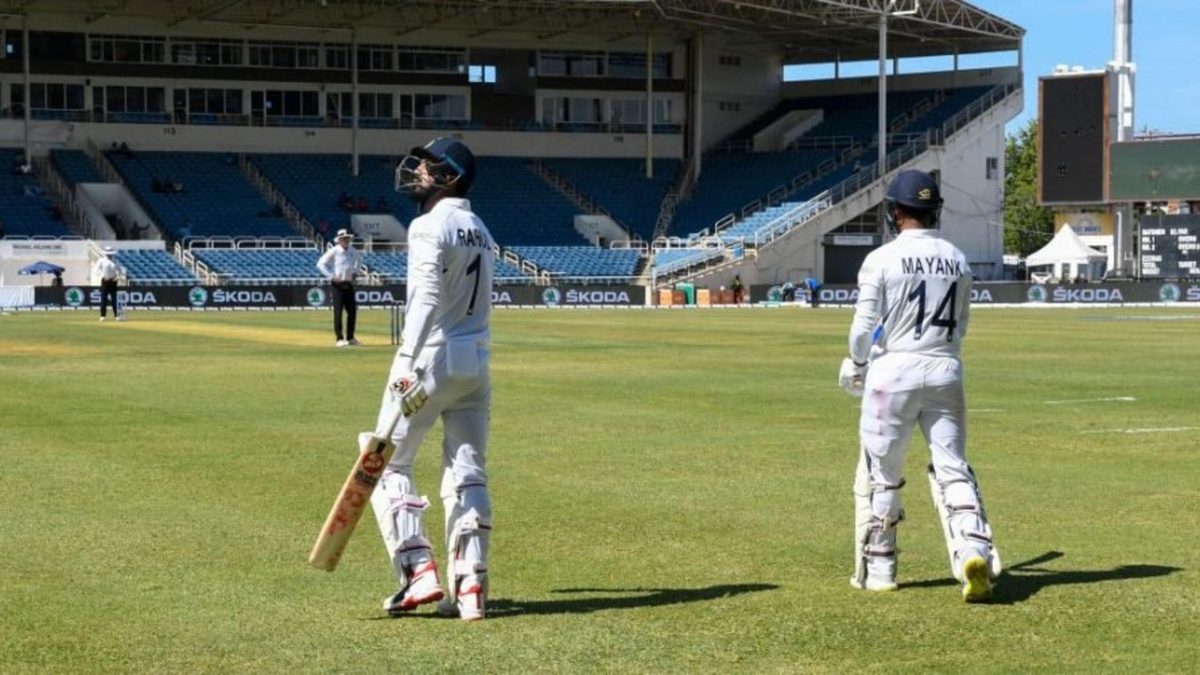
Shubman Gill’s unexpected absence has thrown up a sudden challenge for the Indian team ahead of the England series, but there are two (and a few more) reliable options in the squad to fill the gap.
Having earned his spot as a first-choice opener after a successful debut series against Australia, Gill was primed to take up the role for his maiden Test trip to England. A stress injury on his left leg has put him in serious doubt for the first Test, with no clarity yet whether he will be available for the entire five-match series.
Fortunately for India, the absence of an off-colour Gill might not be that big a pinch, given the backup resources they possess in the form of KL Rahul and Mayank Agarwal.
The case for KL
A pleasing sight when all’s going right for him, KL Rahul has fallen quite a few notches in the pecking order over the last few years. The dip came in 2019 when his fluency completely deserted him, and a 63-ball six in Kingston prompted a much-needed exclusion.
It was less than a year before the laborious Kingston effort that Rahul proved his mettle in treacherous, swinging conditions in England, notching up a century in the Oval Test. Rahul unleashed some of his buttery strokes even as the top order struggled, giving an emphatic statement at a time when India was playing musical chairs with its openers. But that was three years ago.
Rahul hasn’t played a Test since 2019, and even though he’s the only player in the squad with the experience of opening in England, suddenly putting him in the firing line might backfire spectacularly. Opening in England is a tough job, and starting with an undercooked Rahul might be a big risk not worth taking.
Time to welcome back Mayank?
It isn’t as straightforward. The other option, Mayank Agarwal, has enjoyed more recent success, but even his honeymoon period in Test cricket seemingly expired by the start of 2020. In his short career, he has played more matches away than home ( nine versus five ) but has also had a lower success rate abroad, averaging just 26.76 after tours to Australia, New Zealand and West Indies. Even in a couple of matches, he played with the India A team in England (2018), he succumbed to two ducks in four innings.
On the whole, though, Mayank has the edge, having provided a solid demonstration of his dexterity against the red ball — although naturally aggressive, Mayank’s tight technique is a solid proposition to have, especially when opening will be crucial to India’s success or failure. Two double centuries in the last two years, even though in wildly different conditions, showed his class, and the prolific run not too long ago makes him the immediate next in line.
The dilemma
With KL Rahul’s Test limbo stretching as far back as September 2019, there will be apprehensions over including him for a role as crucial as this, but the past experience of dealing with, and conquering English conditions do make him an obvious contender. For Mayank, the chances of getting selected are higher since he was the incumbent opener as recently as the start of the Australia tour, but the low returns and questionable overseas numbers also work against him.
And it isn’t all about these two: in the reserves, there’s another specialist opener – Abhimanyu Easwaran – who has been notching up big scores in domestic cricket and has been part of the extended squad for multiple tours now. While a big gamble, Easwaran is in the side for scenarios such as these, and his first-class career so far has shown how he’s ready for the next big step.
Further, there are more options within the main squad too: pushing Hanuma Vihari at the top is an experiment tried before, and he did fairly well, facing 111 deliveries across two innings in Australia, but has primarily played in the middle order for India. Another left-field choice would be opening with Cheteshwar Pujara, although the chances of displacing their main No.3 from his position are low. With two specialist openers (excluding Easwaran) available, making other movements in the XI might not be the smartest choice.
All in all, Mayank edges ahead of the competition on the basis of his overall performances in the role in the last two and a half years. The numbers might have been heavily skewed due to his beastly home record, but Mayank seems to have adapted quickly to new terrains in the past: in Australia, he hit a fine 77 in only his third Test innings, managed a fifty after two middling scores on his first trip to the Caribbean, and also scored a valiant 58 in Wellington last year when no other batsmen managed more than 29. The same was the case on his trip with the A team in 2018, when after three low scores, Mayank fought back with a second-innings 68 against West Indies A in Beckenham, having also top-scored for India in the List A tri-series on the same tour.
As the immediate backup opener who lost his spot after three poor Tests, Mayank does deserve another go after all the hard work he did in his first 10 Tests in that role.








